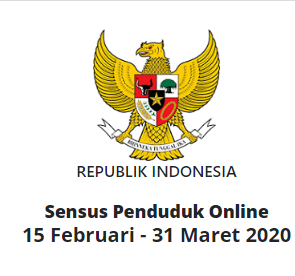

- #Software Data Penduduk Indonesia serial number#
- #Software Data Penduduk Indonesia registration#
- #Software Data Penduduk Indonesia verification#

Indonesia's e-KTP program achieved 100 million biometric enrollments and de-duplications in just under one year. The size of the card is in accordance with ISO/IEC 7810 with a credit card size form factor that is 53.98 mm x 85.60 mm. Data storage in the chip is in accordance with international standards and NISTIR 7123 Machine Readable Travel Documents ICAO and EU Passport 9303 Specification 2006. The wave will be recognized by a detector to verify whether the rightful holder is using the card. The chip has an antenna that issues a wave when swiped. A chip is implanted between white and transparent plastic on the top two layers. The e-KTP consists of nine layers to increase security.
#Software Data Penduduk Indonesia registration#
23 year 2006 on Residency Administration).ĭata recording for e-KTP registration involves taking fingerprints from all 10 fingers, although the card's chip records only the right thumb and index finger prints. The e-KTP is the basis for the issuance of Indonesian passports, driving licenses (SIM), Taxpayer Identification Numbers (NPWP), insurance policies, land ownership certificates and other identity documents (Article 13 of Law no. The e-KTP contains unique biometric data and was designed to improve government services and population databases, while reducing fraud and security threats. In May 2013, it was reported the chip inside the e-KTP could be damaged and rendered useless by repeatedly photocopying the card. Its implementation has become tainted by corruption.
#Software Data Penduduk Indonesia serial number#
The card is supposed to be more durable, contains a microchip, unique serial number and can be used for multiple applications for government services. The e-KTP was trialed in six areas in 2009 and launched nationwide in 2011. This KTP featured the bearer's thumb print and a unique serial number.
#Software Data Penduduk Indonesia verification#
Surveillance, verification and validation remained at the RT/RW levels. The bearer's photo was printed directly onto a plastic card. The card was signed by the subdistrict head, the local military commander and head of police. When Aceh province was placed under a state of Military Emergency in 2003, it had a different KTP design featuring a red and white background and a garuda bird. The background color of the KTP was often yellow. The cards featured a photo, signature, serial number and thumb print. Cards were issued by the lowest neighborhood administrative levels, known as RT and RW. The KTP was made from paper, laminated in plastic and stamped with an ink stamp. The discriminatory codes were later abandoned. This policy allowed government officials to know whether a person was a former political prisoner or of Chinese descent. See also: Certificate of Citizenship (Indonesia)ĭuring Suharto’s New Order regime (1966–98), citizenship cards held by former political prisoners ( tahanan politik or tapol) and ethnic Chinese featured special codes to denote their status. Behind the main data section was a propaganda spiel that indirectly required the holder to swear allegiance to the Japanese invaders. It featured Japanese and Indonesian text. The Japanese occupation (1942–45) ID card was made from paper and was much wider than the current KTP. Two additional types of ID documents were required by Chinese in the Dutch East Indies: the entry permit (Dutch: toelatingskaart) and the residency permit ( vergunning tot vestiging, known as ongji by Chinese). The paper card measuring 15x10 cm was issued and signed by heads of local administrations ( hoofd van plaatselijk). Citizens seeking to obtain proof of residence were required to contact their local controleur (controller) and pay a fee of 1.5 guilders. This card did not record the bearer's religion. The general identity card during the Dutch colonial era was called a residence certificate (Dutch: verklaring van ingezetenschap).


 0 kommentar(er)
0 kommentar(er)
